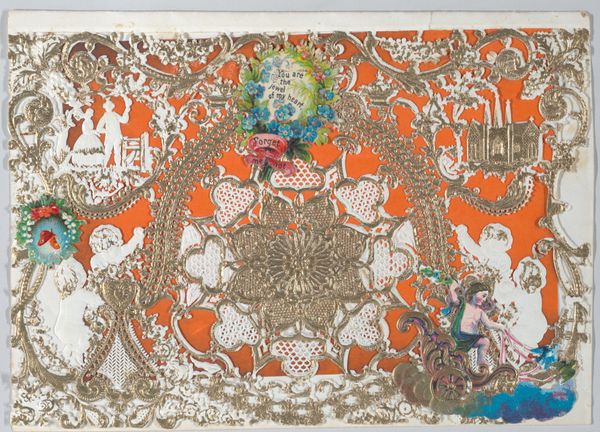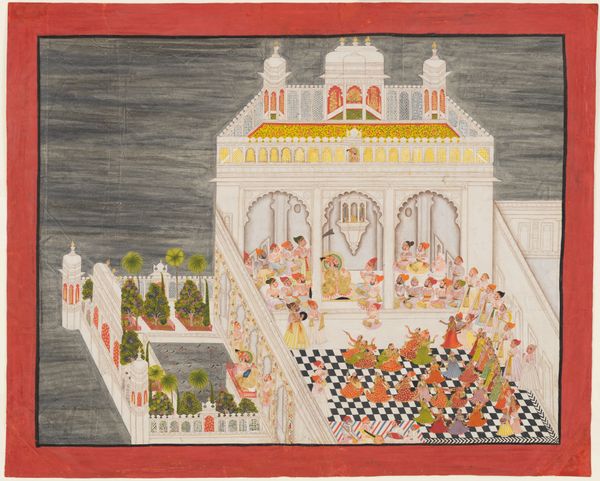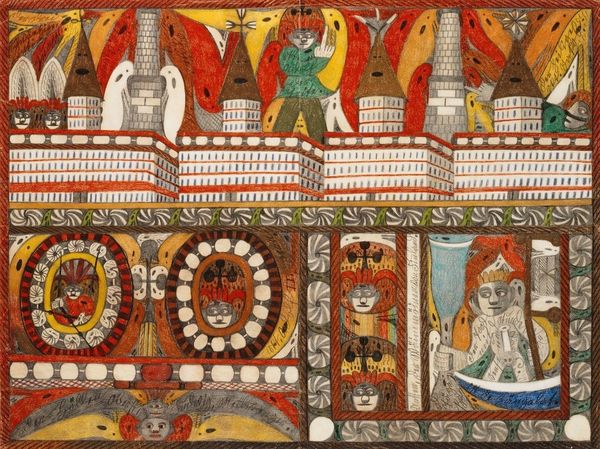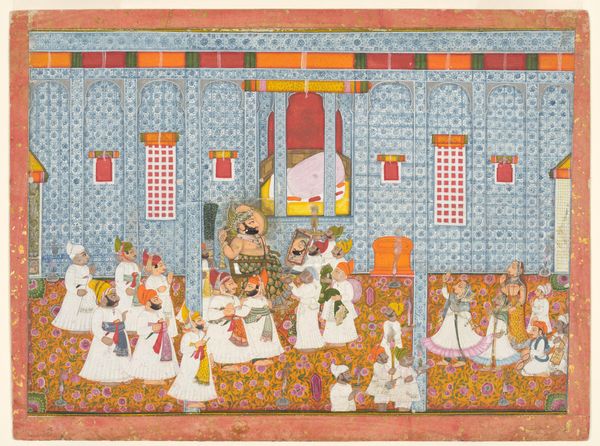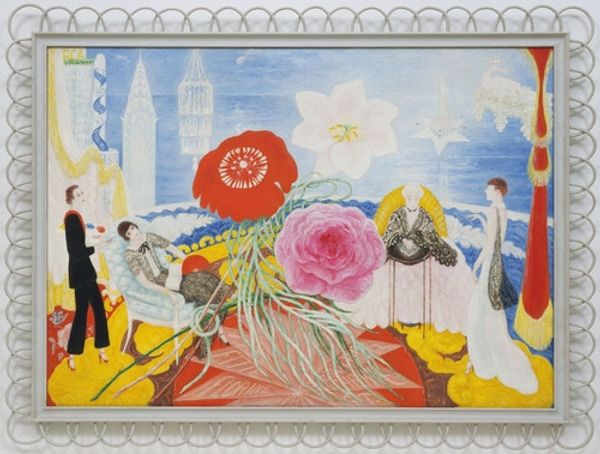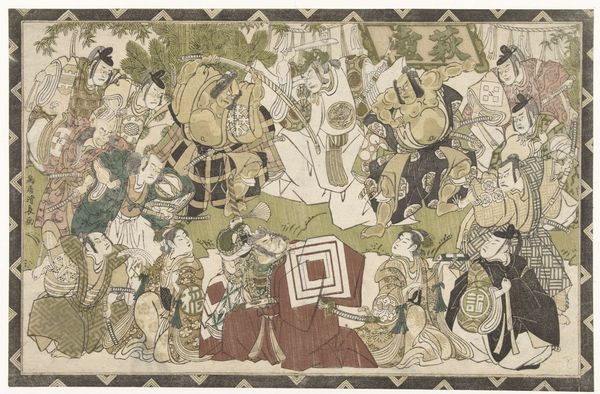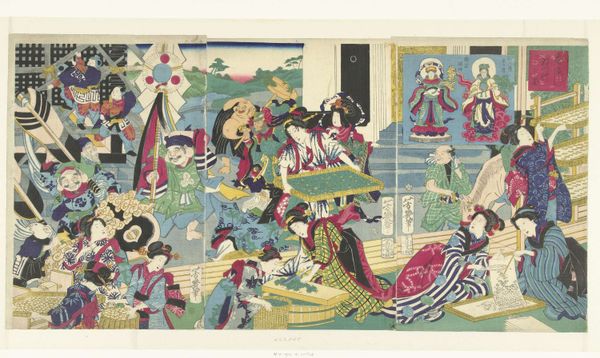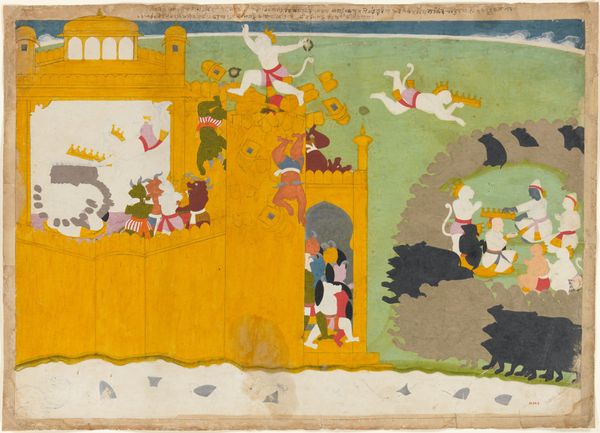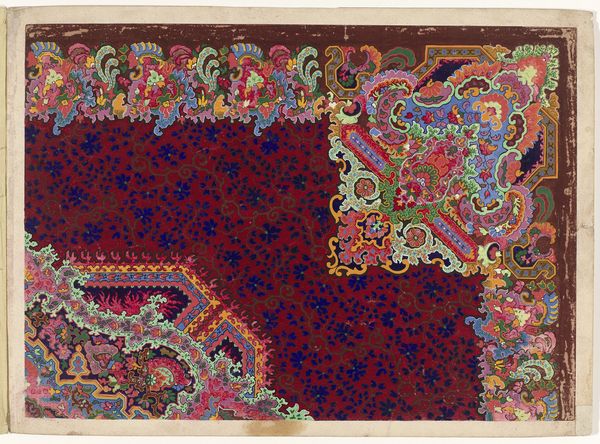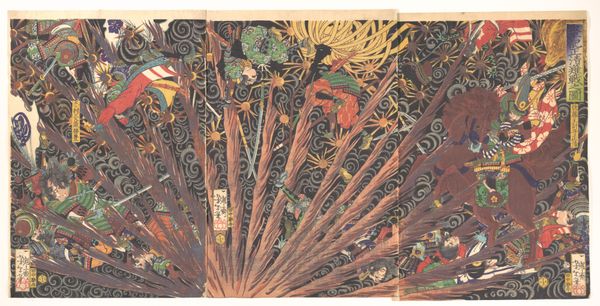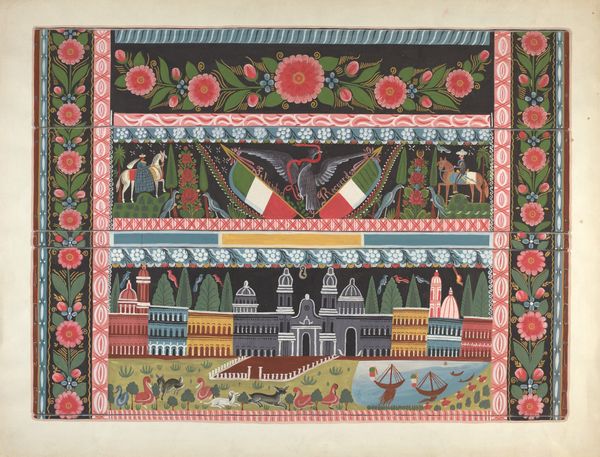
mixed-media, collage, photography, photomontage
#
mixed-media
#
collage
#
graffiti art
#
postmodernism
#
street art
#
photography
#
photomontage
#
decorative-art
#
decorative art
Dimensions: 45.5 x 61 cm
Copyright: Sergei Parajanov,Fair Use
Curator: Sergei Parajanov's "I sold dacha," created in 1985, presents us with a vibrant mixed-media collage. What are your initial thoughts? Editor: Utter chaos, visually speaking! But it’s an organized chaos. There's something performative about it, too, theatrical, with the costumed figures dominating the composition. Curator: Yes, "theatrical" is spot on. Parajanov worked in film, and his artistic eye reflects the stage and cinema in many respects. You see photography, photomontage elements combined with other media. The layering suggests both density and the passage of time, a kind of palimpsest of personal history layered onto public life. Consider the Soviet context: what does selling the "dacha" signify in that period? Editor: The dacha was a retreat, a symbol of status but also a necessary escape, a space for freedom and self-expression. The act of “selling” is thus multivalent. Look at the seashell motifs repeating through the work. Seashells can signify pilgrimage, birth, and femininity, but also dispossession. What do you make of the mixed imagery? Curator: I focus on Parajanov’s process itself – the ways he subverts traditional art categories, using “low” materials in concert with more established photographic techniques. He's deliberately blurring those lines, collapsing distinctions between art, craft, and folk tradition, much like other postmodernist experiments of the era. And the labour involved should not be ignored. He cut, pasted, and stitched the physical elements to generate meaning. Editor: Indeed, look at how he frames the work. It's a decorative art in itself, as well as holding references to family photographs and folklore imagery with strong decorative qualities. Those framed shells suggest portraits; family members put on show and viewed with nostalgia. This points towards collective memories and individual symbolism; themes that overlap and contradict, but make the artwork intriguing and complex. Curator: Right, the work challenges us to think about art-making itself, and it resists simple narrative. It reveals as much about the restrictions of the art world as it does about Parajanov’s experience with the Soviet world. Editor: An artwork laden with symbols of displacement, memory, and even defiance – it makes one pause and contemplate layers that connect public with personal life through its mixed elements and complex compositions.
Comments
No comments
Be the first to comment and join the conversation on the ultimate creative platform.
